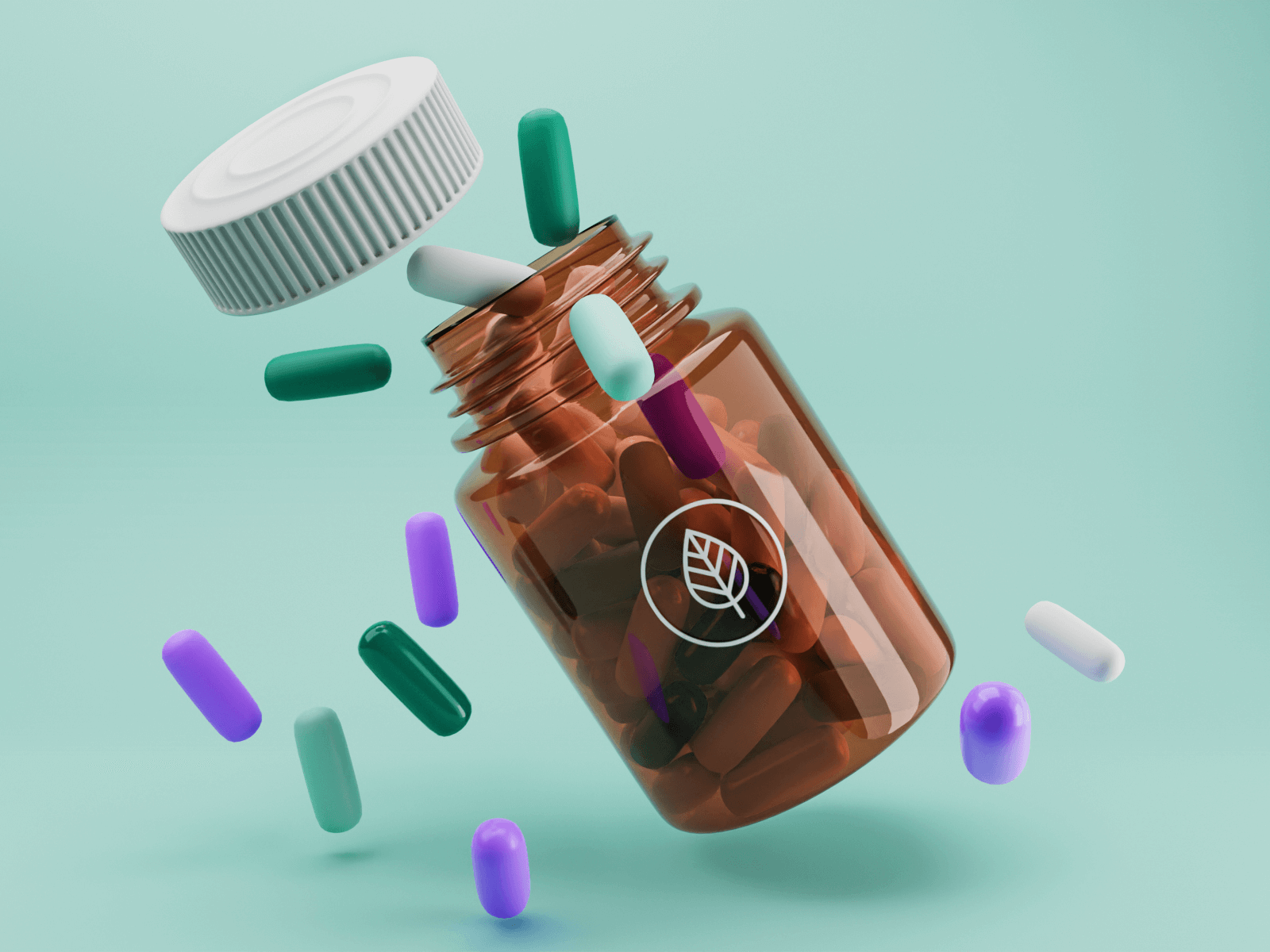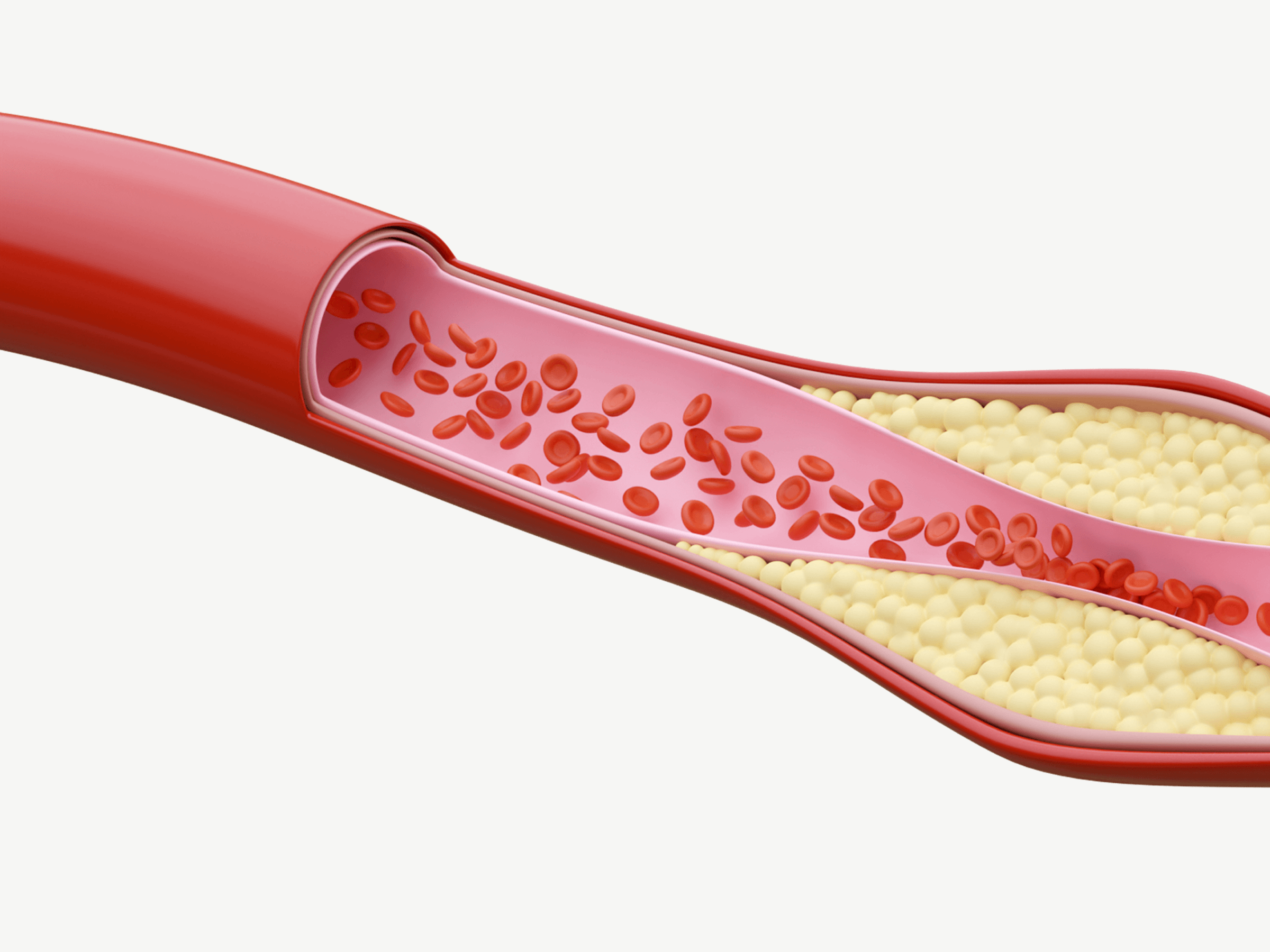3 powerful ways to use 3D illustrations for healthcare

How to deliver outstanding medical design while ensuring the reliability and authoritativeness of your healthcare website?
What is 3D design, and why is it beneficial to healthcare?
Imagine entering a health-related website filled only with textual content. The black letters stand out conspicuously on the white background. While reading, you are faced with a plethora of medical jargon that you’ve learned during medical studies but don’t want to come across when searching the web. Finally, tired and bored, you decide to give up reading and search for a more engaging and, most importantly, beneficial user experience.
Without a doubt, the digital era has its own specific rules. For one, even the highest-quality textual materials are nothing without eye-catching visual content.
Once the digital transformation was well underway, giving rise to a new phenomenon of digital native doctors, health-related brands saw no other option but to adapt to the digital environment. It was no longer the question of a potential investment but rather a pressing necessity.
Nevertheless, half-measures are insufficient to stand out from the fiercely competitive environment. For this reason, we recommend introducing multi-dimensional visualizations rather than relying solely on run-of-the-mill illustrations. Continue reading to learn about the power of 3D illustrations that draw doctors’ and patients’ attention efficiently.
What is 3D design?
From a historical point of view, we’ve always strived to achieve multi-dimensional images. With the discovery of geometry in the 3rd century BC, Euclid ushered in a new era of thinking about the depth of objects reflected on a piece of material [1]. Later on, the achievements of Rene Descartes, who gave the world analytic geometry in the 17th century, and James Joseph Sylvester, who invented matrix mathematics in the mid-18th [2], paved the way for the introduction of multi-dimensional art and technology.
Now, thanks to continuous tech advancement, 3D modeling, as widely available and affordable as ever, is considered cutting-edge technology transforming almost every industry. What’s more, in the last few years, 3D design has quickly evolved into one of the most popular graphic design trends. And this fact cannot be omitted by any healthcare brand.
3D fundamentals
There are plenty of reasons behind the emergence of the 3D design boom in the recent decade. One of the main arguments is that modern 3D modeling has changed the way of representing concepts and creative ideas, introducing a completely new quality to digital communication. By adding another dimension through light and textures, 3D illustrations allow designers to portray reality as well as abstract ideas in a more detailed and comprehensive way. Not to mention that each 3D imaging is ultimately based on real-world physics. Consequently, multi-dimensional objects are getting closer to accurate representations while becoming much more catching for the human eye.
Thus, today’s 3D design has a lot in common with photography, as the designer also has to think about the various visualization metrics, such as shot angles, lighting, and, most importantly, scene composition. The main difference is that the creation of all the elements is on the designer’s side, which indicates the obvious similarities to two-dimensional illustrations.
In this understanding, multi-dimensional design ranks between 2D design and photography, making up for their deficiencies. On the one hand, 3D design is not 2D, but it still has lots of flexibility in the style of imaging. On the other - 3D is not photography, but you can still portray objects in “a real way”, making everything more real.
Examples of 3D illustrations for healthcare
One of the most crucial advantages of 3D illustrations is their versatility. The uses of 3D are wide and tend to vary across almost every industry, from television to engineering. But what about the key benefits 3D design can bring to the healthcare industry? Let’s consider it through examples of use.
#1 Brochures and educational materials
It comes as no surprise that in the digital era, creating, sharing, and promoting high-quality medical content is a fundamental element of any healthcare marketing strategy. Patients search for reliable information about their health conditions, whereas HCPs are becoming more and more reliant on the Internet as an educational resource that can enhance their medical practice. According to the studies, 66% of Internet users looked online for information about a specific disease or medical problem, and 56% for medical treatment and procedure [4]. What’s more, health searches and educational-related activities are joint subjects all around the world for which people use their phones [5].
The main conclusion that comes to mind is that there is an evident need for trustworthy health information across all parts of the globe, regardless of interests, nationality, or other demographics.
Without a doubt, writing high-quality medical content is a prerequisite to any successful content marketing strategy, as it ensures reliable knowledge based on the best evidence possible. Nevertheless, to stand out from the crowd, you need an additional requirement to meet – visually appealing educational materials. This is the only way to effectively catch the human eye and encourage users to continue reading and learning.
The essence of 3D illustrations ensures these qualities. Leveraging the depth of objects, 3D models can efficiently picture a plethora of medical structures and their mechanisms of action in a highly detailed and comprehensive way. What about the results? You’re enhancing your digital communication while improving the readability and quality of your medical content.
#2 Websites
First impressions matter. According to the researchers from Human-Oriented Technology Lab, it takes about 50 milliseconds for users to form an opinion about your website [6]. More importantly, this feeling will determine whether they stay and explore further or leave the website immediately.
In the case of healthcare, British researchers investigated how different design and content factors affect the trust rate towards medical websites. What they discovered is that among all test participants’ opinions about the website and trust/mistrust towards it, 94% of answers were about design, and only 6% were about the actual content [7].
Hence, interesting, high-quality design has the power to change users’ perceptions and get them to trust your website. Coming back to the benefits that 3D can bring to your business, multi-dimensional visualizations can boost the attractiveness of your site while keeping it trustworthy and reliable for recipients.
#3 Social media presence
There’s no question how demographic changes impact healthcare. As Fierce Health claims, patients from Generation Z have the power to turn the health industry on its head [9] with their digitally-embedded behaviors, unique interests, and expectations.
Thus, with the patients from Gen Z on the front, and the growing generation of digital native doctors on the back, healthcare marketers must alter the ways they used to communicate with their audiences. With the medical communities born in the digital era, in order to build strong relationships with your target groups, it is paramount to stay at the forefront of innovation.
One of the efficient ways to get there is to cease using social media channels “just to be active” and begin expanding your SoMe presence through valuable content that stands out from the competition.
Validate data, use reliable sources, and deliver high-quality EBM content. When you achieve considerable expertise, spice up your materials with a 3D design to enhance your message and make users more engaged with the medical content you provide.
What does the process of 3D modeling look like? Check out our Instagram speed design processes.
Final thoughts
There are countless advantages of 3D design to healthcare businesses, as multidimensional images offer a completely new quality to digital communication. 3D modeling has the ability to portray objects and ideas in an accurate way, going far beyond the limits of 2D while providing much more flexibility in the creative process.
What are the benefits of 3D illustrations to healthcare?
- Boost the attractiveness of your website, thus increasing the conversion rate.
- Increase the readability and accessibility of your medical content.
- Simplify complex medical concepts.
- Build up and support a consistent brand identity to give life to your brand.
- Become the silent ambassador of your brand.
The main difference between 3D illustrations, 2D, and photography is that multi-dimensional design requires a particular set of modeling skills and specialized programs. You can cover it in-house or rely on professionals that know all the nuances of digital medical marketing and design. Our diverse team of healthcare professionals, designers, developers, and marketers will guide you in preparing an efficient digital marketing strategy, creating medical data-driven content, and designing high-quality 3D illustrations. Stay on the front of innovation! How about discussing the details? Just contact us.
References:
- Geometry, https://en.wikipedia.org/wiki/Geometry [last accessed: 19.01.2022].
- Ufo 3D, History of 3D modeling, https://ufo3d.com/history-of-3d-modeling/ [last accessed: 19.01.2022].
- Sebastian Deguy, Why creative professionals are joining 3D revolution, https://blog.adobe.com/en/publish/2020/09/11/why-creative-professionals-are-joining-3d-revolution [last accessed: 19.01.2022].
- Susannah Fox, Summary Charts, https://www.pewresearch.org/internet/2011/02/01/summary-charts/ [last accessed: 19.01.2022].
- Laura Silver, Christina Huang, Social activities, information seeking on subjects like health and education top the list of mobile activities, https://www.pewresearch.org/internet/2019/08/22/social-activities-information-seeking-on-subjects-like-health-and-education-top-the-list-of-mobile-activities/ [last accessed: 19.01.2022].
- Gitte Lindgaard, Gary Fernandes, Cathy Dudek & J. Brown, Attention web designers: You have 50 milliseconds to make a good first impression!, Behaviour & Information Technology, 25:2, https://www.tandfonline.com/doi/abs/10.1080/01449290500330448 [last accessed: 19.01.2022].
- Elizabeth Sillence, Pam Briggs, Lesley Fishwick, Peter Harris, Trust and mistrust of online health sites, CHI '04: Proceedings of the SIGCHI Conference on Human Factors in Computing Systems, https://dl.acm.org/doi/10.1145/985692.985776 [last accessed: 19.01.2022].
- Peep Laja, First Impressions Matter: Why Great Visual Design Is Essential, https://cxl.com/blog/first-impressions-matter-the-importance-of-great-visual-design/#h-how-to-make-a-great-first-impression-with-visual-design [last accessed: 19.01.2022].
- Rick Halton, Industry Voices—Generation Z is a game changer for healthcare, https://www.fiercehealthcare.com/practices/industry-voices-generation-z-a-game-changer-for-healthcare [last accessed: 19.01.2022].
 Medical Content Creation
Medical Content Creation
 Digital Product Development
Digital Product Development
 Growth Marketing
Growth Marketing

